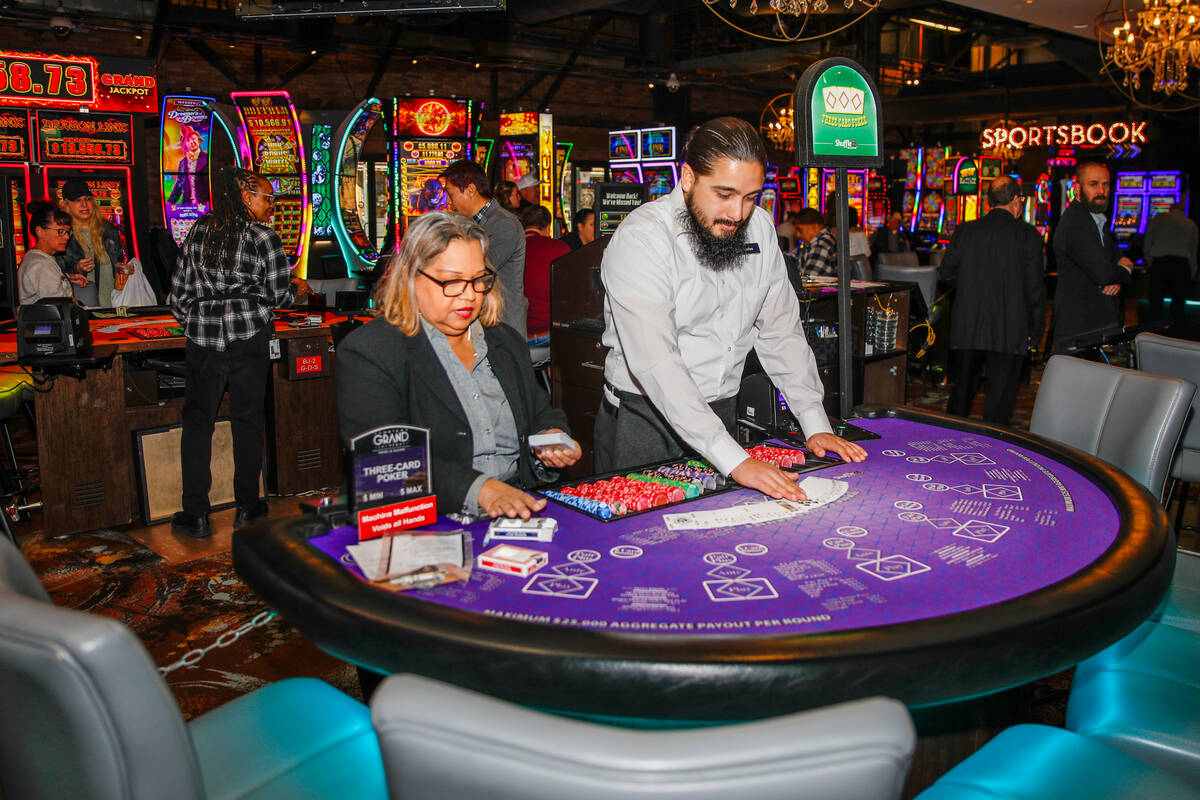Downtown hotel-casino celebrates 10 years on Fremont Street

A hotel-casino with a long history tied to gaming and revitalization in the downtown area is celebrating 10 years in business.
Downtown Grand will honor its 10th anniversary at a New Year’s Eve bash. The property opened in late October 2013, transforming the former Lady Luck years after its closure and signaling changes along Fremont Street after the Great Recession.
Lady Luck and transformation
The property’s casino history began in the mid-1960s. It opened as the small Lady Luck casino in 1968, and by the late 1980s, it had two hotel towers on the property with 743 rooms. But by 2006 the property had turned south and closed its doors.
Real estate investment firm CIM Group bought the property in 2007. The Southern California-based firm spent “north of $200 million” in acquiring and renovating the building.
Development wasn’t immediate, though. The city and landowners spent several years haggling over additional land deals and expectations to redevelop the resort. At one point, then-Mayor Oscar Goodman called the structure “a rotting corpse,” Review-Journal archives show.
Crews first demolished a building adjacent to the main resort in 2009, and construction on the main project was completed in 2013.
The casino is operated by Fifth Street Gaming, whose portfolio includes the Silver Nugget and Ojos Locos Sports Cantina and Casino in North Las Vegas and the Golden Tiki restaurant in Chinatown.
“There was a lot of work to be done,” Downtown Grand General Manager Andrew Economon said of the lengthy renovation period. The two hotel towers were renovated, with new public spaces and restaurants to bring it up to modern standards.
Downtown Grand’s opening in 2013 came at a pivotal time for the area formerly known as the Glitter Gultch. Zappos relocated its headquarters to the nearby former City Hall building, The D opened in the former Fitzgeralds on Fremont Street, and SlotZilla, the $11 million zipline that runs through the Fremont Street Experience, was unveiled.
Urban standards
From its inception, hotel-casino operators have played up the property’s urban appeal. Owners told the Review-Journal during the 2013 opening that they took a “different approach” than Strip casinos by offering multiple points of entry and easy access to dining options.
Nowadays, Economon uses malls as the analogy.
“I compare it to outdoor malls that we have today versus the closed-in malls before,” he said. “If you get some of the Strip properties those are that closed-in mall feel, versus now where we have that more outdoor feel where you’re able to bounce around outside between different properties.”
Downtown Grand’s approach is so city block-based that it bought a street, allowing it to shut down the block for special events. The resort’s parent company also owns Third Street between Ogden and Stewart avenues and the buildings across the street. It leases out the restaurant space to most of its tenants, including Pizza Rock and Hogs and Heifers Saloon. But the company purchased the operations of Triple George Grill as well and made it the resort’s go-to steakhouse.
“We have some Day One employees that are 10-plus year employees because they’ve been at Triple George,” Economon said.
The resort also plays up its urban appeal during major events downtown. It opened the same weekend as the Life is Beautiful festival and has acted as the official headquarters for all 10 years of the multi-day music event. The most recent event also brought integration at the resort pool, where Life is Beautiful acts performed additional sets for guests.
Economon said that the property has grown in its 10 years. Most recently, it added a third hotel tower in 2020. The hotel has more than 1,100 rooms and is among the largest hotels in downtown Vegas, according to Clark County lodging inventory records.
Future development plans, targeted to start sometime next year, include changes to food and beverage outlets, a complete pool remodel and room remodels, Economon said.
“We’ve seen market share grow for us in the downtown market and although we’re not literally on Fremont Street,” he said. “I think we share an advantage that Fremont Street is walking distance. You’re not necessarily exposed to the noise and the fervor that goes on Fremont Street every day, but walk 150 yards and you’re there.”
McKenna Ross is a corps member with Report for America, a national service program that places journalists into local newsrooms. Contact her at mross@reviewjournal.com. Follow @mckenna_ross_ on X.